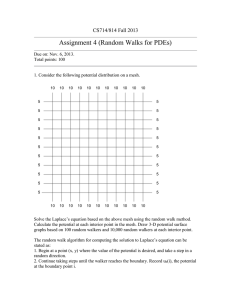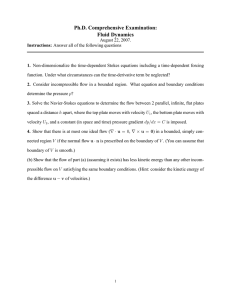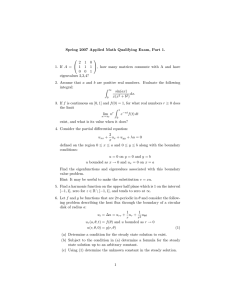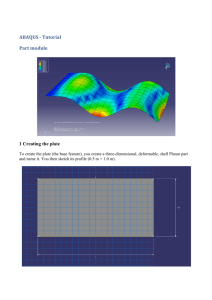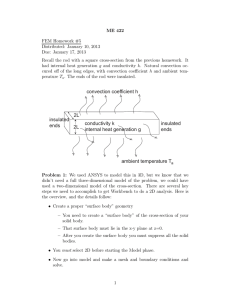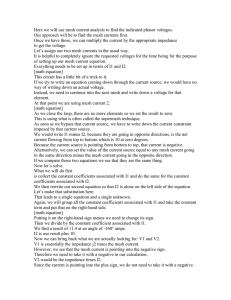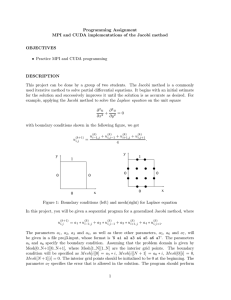Name Score Spring 2005 MATH 582 Homework 7
advertisement
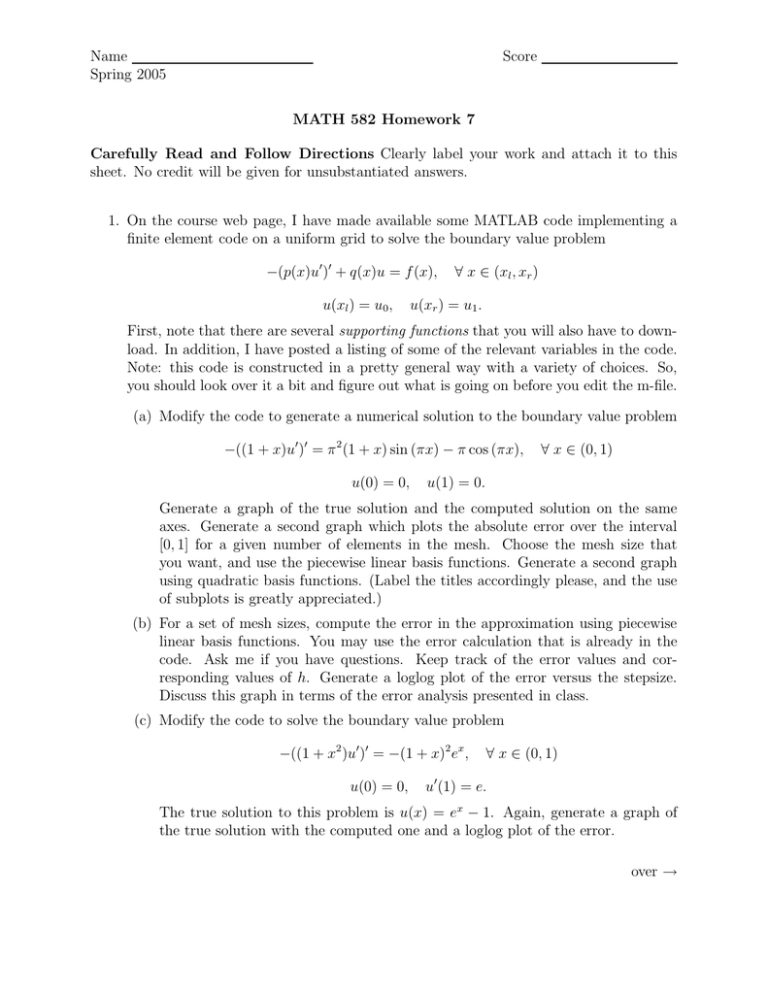
Name Spring 2005 Score MATH 582 Homework 7 Carefully Read and Follow Directions Clearly label your work and attach it to this sheet. No credit will be given for unsubstantiated answers. 1. On the course web page, I have made available some MATLAB code implementing a finite element code on a uniform grid to solve the boundary value problem −(p(x)u0 )0 + q(x)u = f (x), u(xl ) = u0 , ∀ x ∈ (xl , xr ) u(xr ) = u1 . First, note that there are several supporting functions that you will also have to download. In addition, I have posted a listing of some of the relevant variables in the code. Note: this code is constructed in a pretty general way with a variety of choices. So, you should look over it a bit and figure out what is going on before you edit the m-file. (a) Modify the code to generate a numerical solution to the boundary value problem −((1 + x)u0 )0 = π 2 (1 + x) sin (πx) − π cos (πx), u(0) = 0, ∀ x ∈ (0, 1) u(1) = 0. Generate a graph of the true solution and the computed solution on the same axes. Generate a second graph which plots the absolute error over the interval [0, 1] for a given number of elements in the mesh. Choose the mesh size that you want, and use the piecewise linear basis functions. Generate a second graph using quadratic basis functions. (Label the titles accordingly please, and the use of subplots is greatly appreciated.) (b) For a set of mesh sizes, compute the error in the approximation using piecewise linear basis functions. You may use the error calculation that is already in the code. Ask me if you have questions. Keep track of the error values and corresponding values of h. Generate a loglog plot of the error versus the stepsize. Discuss this graph in terms of the error analysis presented in class. (c) Modify the code to solve the boundary value problem −((1 + x2 )u0 )0 = −(1 + x)2 ex , u(0) = 0, ∀ x ∈ (0, 1) u0 (1) = e. The true solution to this problem is u(x) = ex − 1. Again, generate a graph of the true solution with the computed one and a loglog plot of the error. over → 2. In Section 2.3 of the class handout, we discussed bounded linear functionals. Given the Hilbert space V with inner product (·, ·) and induced norm k · k, consider u ∈ V a fixed element. Show that the functional F : V → lR defined by F (v) = (u, v) for all v ∈ V determines a bounded linear functional on V . 2
